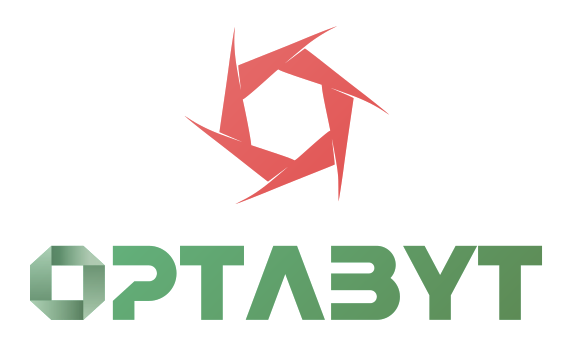
Table of Contents
ToggleWeb App Development Norway: Empowering Digital Innovation Through Custom Web Applications
Table of Contents
Introduction
From banking systems and e-commerce platforms to internal CRMs and SaaS tools, web applications have become the digital core of modern businesses. In Norway, companies are rapidly evolving beyond basic websites—embracing smart, interactive, and secure web applications that elevate user experience, automate workflows, and drive business growth.
Web app development in Norway involves building high-performance, cloud-powered, and GDPR-compliant web solutions tailored to your company’s goals. Whether you’re a startup, enterprise, or public sector institution, custom web apps provide the functionality and scalability needed to thrive in today’s digital economy.
This guide breaks down what web app development involves, why it matters in Norway, the technologies used, common use cases, and how a reliable Norwegian web app partner can help you innovate confidently.
What Is Web App Development?
A web application is a software platform that runs in a browser and performs dynamic functions like data processing, real-time updates, and user-specific actions—unlike static websites, which mainly display information.
Examples of web applications include:
Online banking platforms
Booking and scheduling systems
SaaS tools
Project management dashboards
Customer relationship management (CRM) systems
Membership portals and LMS platforms
Web app development is the process of designing, coding, integrating, testing, and deploying these solutions using both frontend and backend technologies.
Why Norwegian Businesses Choose Web App Development
1. Tailor-Made Digital Systems
Off-the-shelf software rarely fits complex local business operations. Custom development allows you to build solutions that fit your workflows, not the other way around.
2. Always Accessible
Web apps operate in any browser and on any device—delivering 24/7 access without the need for downloads or installations.
3. Highly Scalable
As your business grows, new features and integrations can be added seamlessly without needing to redesign the system.
4. Secure and GDPR Compliant
Handling personal data? Your web application can be built from the ground up to meet strict GDPR and Norwegian data protection regulations.
5. Cloud-Powered Performance
Most Norwegian businesses prefer cloud deployment, ensuring speed, uptime, backups, and cost-efficiency.
Key Features of a Modern Web Application
User login, signup, and role-based access
Responsive design for desktop, tablet, and mobile
Real-time data syncing (WebSockets, polling, etc.)
Custom dashboards and workflows
Integration with APIs, payment gateways, and CRMs
Cloud backup and disaster recovery
Advanced security (2FA, encryption, firewalls)
Offline capabilities (especially in PWAs)
Analytics and performance monitoring
Tech Stack Used in Web App Development (Norway)
Frontend (User Interface)
React.js – Component-based, fast-loading, perfect for SPAs
Vue.js – Lightweight, ideal for fast development cycles
Angular – Best for enterprise-scale applications
Tailwind CSS / Bootstrap – Clean, responsive UI frameworks
Backend (Server Side)
Laravel (PHP) – Secure and ideal for scalable web apps
Node.js (JavaScript) – Best for APIs, chat, and real-time apps
Django (Python) – High security, used for healthcare, gov, and finance
.NET Core (C#) – Enterprise-grade applications, banking, and logistics
Spring Boot (Java) – Great for complex, multi-layered apps
Databases
PostgreSQL – Advanced features for analytics and reporting
MySQL – Widely used and efficient
MongoDB – NoSQL for dynamic data structures
Redis – Real-time caching and performance enhancements
Hosting & DevOps
AWS, Azure, Google Cloud – High availability and scalability
Docker / Kubernetes – Modern, container-based deployment
CI/CD Pipelines – For automated testing and updates
Types of Web Apps We Build in Norway
Business Apps
Invoice & billing systems
Inventory & warehouse management
CRM & HRM systems
SaaS Platforms
Learning Management Systems (LMS)
Subscription-based portals
Document automation tools
E-commerce Dashboards
Vendor/admin dashboards
Product & order management
Logistics & analytics integration
Booking & Scheduling Apps
Hotel/clinic reservation platforms
Event and ticketing systems
Online appointment booking
Real-Time & Live Apps
Chat platforms
Live order tracking
Real-time analytics
Government & NGO Platforms
Data collection and visualization tools
Public information portals
Report submission systems (Altinn integration)
Web App Development Process
1. Discovery & Requirements
Define business objectives
Map user journeys
Select technologies and integration needs
2. UX/UI Design & Wireframes
High-fidelity mockups using Figma/Adobe XD
Prototyping for feedback
Accessibility and usability testing
3. Development
Backend logic and frontend UI
API development and database setup
Integration with third-party tools
4. Testing & Quality Assurance
Unit and integration testing
Security and load testing
Cross-device and cross-browser checks
5. Deployment
Secure cloud hosting setup
CI/CD deployment pipeline
Monitoring and alert systems
6. Maintenance & Scaling
Regular updates and patches
New features and modules
Load balancing and performance tuning
Cost of Web App Development in Norway
| App Type | Estimated Cost (NOK) | Timeline |
|---|---|---|
| Simple Business App | 80,000 – 150,000 | 4 – 6 weeks |
| Mid-Level SaaS or CRM | 150,000 – 300,000 | 6 – 10 weeks |
| E-commerce Admin Platform | 120,000 – 250,000 | 5 – 8 weeks |
| Complex Enterprise System | 300,000 – 600,000+ | 10 – 16+ weeks |
Note: Prices vary based on complexity, tech stack, and required integrations.
Why Work with a Norwegian Web App Company?
Deep understanding of local market needs and business processes
Built-in GDPR compliance and data sovereignty
Seamless integration with Vipps, BankID, Altinn, and Tripletex
Norwegian-speaking support and timezone convenience
Long-term maintenance and product evolution plans
Frequently Asked Questions (FAQs)
1. What’s the difference between a website and a web app?
A website is primarily static and informative, while a web app is interactive and allows users to perform actions.
2. Can you integrate Vipps or Klarna?
Yes, we offer secure payment gateway integrations tailored to Norwegian users.
3. Is mobile responsiveness included?
Absolutely. All web apps are built to perform well on mobile, tablet, and desktop.
4. Can new features be added after launch?
Yes. We use scalable architecture that allows for future updates and feature expansions.
5. What if I don’t have technical knowledge?
No worries. We’ll guide you through every step and provide full documentation and training.
6. Are the apps secure and GDPR compliant?
Yes. Security and compliance are prioritized from the ground up—encryption, access control, consent logging, and more.
7. Do you offer maintenance packages?
Yes. We offer support plans including bug fixes, performance updates, and new feature rollouts.
8. Can the app be hosted in the cloud?
Yes. We work with AWS, Azure, and Google Cloud for flexible, high-performance hosting.
9. How long does it take to develop a web app?
Anywhere from 4 to 16+ weeks depending on the complexity and scope.
10. Can you integrate third-party platforms like Visma or Salesforce?
Yes, we specialize in API and platform integrations tailored to your business systems.
Conclusion
Norwegian businesses are rapidly embracing digital transformation—and web applications are central to that shift. Whether you’re launching a SaaS product, streamlining operations, or offering new customer services, investing in web app development in Norway means getting a secure, scalable, and modern digital solution built to last.
We help businesses across all sectors—from startups to government agencies—create custom web applications that align with their goals and Norwegian standards.
Ready to build your next-generation digital tool?
Let’s create a web app that delivers performance, security, and user satisfaction—right here in Norway.
